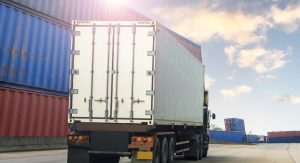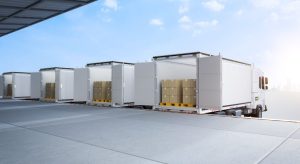Choosing the right transport method is key to optimizing costs and efficiency in haulage logistics. For businesses transporting goods, making an informed choice between full load and part load options can save money and streamline operations.
Here’s a detailed look into the differences between full load and part load transport, helping companies understand the best options for their needs.
Full Load Transport: Dedicated Capacity for Larger Consignments

Full load transport, also referred to as full truckload (FTL) or full container load (FCL), means that an entire vehicle or container is allocated to a single consignment. Rather than being priced by weight alone, the cost of full load transport is fixed according to the total size of the vehicle or container.
The primary advantage of full load transport is that it provides a dedicated, direct journey for the shipment. With no additional stops for other deliveries, a full load transport takes goods directly from point A to point B, which significantly reduces transit time. This makes it an ideal choice for larger shipments, especially when speed is essential.
Additionally, full load transport offers greater control and security. For sensitive or delicate items, goods requiring a specific temperature, or hazardous materials, full load transport provides an added layer of protection by avoiding any interaction with other products, reducing the risk of contamination or damage.
Part Load Transport: Cost-Effective Option for Smaller Shipments
Part load transport, sometimes called less than truckload (LTL) or partial load, consolidates multiple consignments within the same vehicle. This approach is ideal for businesses with smaller loads that don’t fill an entire truck. Instead of paying for an entire vehicle, companies are only charged for the space their load occupies, typically calculated in cubic meters or pallet spaces.
By maximizing space and consolidating various shipments into a single vehicle, part load transport offers significant cost savings. However, because part load vehicles make multiple stops to pick up or deliver other shipments, transit times may be slightly longer than with full load options.
For many businesses, the slightly extended delivery time is a fair trade-off for reduced shipping costs. Part load transport is particularly advantageous for companies that want to optimize their logistics expenses and direct those savings toward other growth initiatives.
Safety and Efficiency in Part Load Haulage

Modern logistics technology has revolutionized the safety and efficiency of part load transport. GPS tracking, real-time updates, and advanced logistics software ensure that shipments can be monitored with high precision. Companies can follow the progress of their consignments from dispatch to delivery, minimizing concerns over lost or misrouted goods.
Additionally, optimized logistics systems allow for detailed planning of part load shipments, enabling companies to specify conditions such as temperature control. Whether goods need to be kept dry, refrigerated, or frozen, part load transport services can accommodate various requirements, ensuring that each consignment arrives in prime condition.
Is Part Load Haulage Cheaper?
Generally, part load transport is a cost-effective option for smaller shipments. Instead of paying for unused space in a vehicle, businesses only pay for the portion of the truck that their goods occupy. This flexibility allows companies to reduce transport costs, especially for shipments that wouldn’t require an entire truckload.
However, it’s important to note that part load transport may take slightly longer to arrive, due to the multiple stops required to consolidate different loads. Delivery times for part load shipments typically remain within 72 hours for international deliveries between the UK and Europe and are often available for same-day or next-day delivery within the UK.
Choosing the Right Option
Ultimately, the decision between full load and part load transport depends on shipment size, urgency, and specific handling requirements. Full load haulage is generally best suited for larger, time-sensitive, or delicate consignments, while part load haulage offers an economical solution for smaller loads that are less urgent.
By understanding these distinctions, businesses can choose the most efficient and cost-effective method for transporting their goods, optimizing their logistics strategy and maximizing their return on investment.




